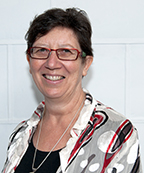
Click an Image below to Enlarge

“The landscape shapes our footprint. Our footprint shapes the landscape.” says Pip.
The discovery of an Aboriginal midden in her family’s backyard when she was five years old sparked artist Pip’s enduring fascination with the marks humans leave behind. The human footprint is intrinsic to her work, governing her intellectual activity through school and university to her executive work with the National Trust.
Pip grew up in a house full of art by significant Australian artists. The young Pip often accompanied her father to exhibition openings and studios. Amongst the artists that Pip met and admired as a child and young adult were John Olsen, John Brack, Lloyd Rees, Elisabeth Cummings, Lance Solomon, Charles Blackman and Euan McLeod. McLeod painted a portrait of Pip’s father; John Brack was commissioned by Pip’s father to paint her mother Joan Croll. It was Brack’s first private commission and now hangs in the National Portrait Gallery in Canberra.
After graduating from the University of Sydney in Archaeology, Pip forged a successful career as an archaeologist, working in Australia and overseas. The artist says the marks of her own culture called her to the National Trust and historic sites.
After a rich and varied career, Pip decided to focus her energy and experience fulltime into her own artistic expression. Her fascination with the everyday objects that humans collect for their practicality and comfort is expressed from unusual angles. Through colour and spatial dis-arrangements, Pip’s interior landscapes ponder on how we interact with our world and our multi-dimensional lives. Just as archaeology brings surprise discoveries and can make us confront our comfortable assumptions, Pip’s objects are also found where they are not meant to be, drawing parallels with unexpected life events. But then the distant view from a frame or anointed space calms and brings perspective on life.
In describing her approach to her art, Pip says “There is a deliberate element of naivety - I feel keeping the hand-drawn nature of the lines gives more life to the work - for example sometimes people describe my chairs as ‘having conversations’ or reaching out towards the observer. They are things we human beings have made: in a way I am anthropomorphising them - they become the human element in the painting, like an object we own reflecting the person we are.
“The miniature landscapes enable me to look out beyond myself and put things into perspective. I see the landscape and human kind as inextricably linked, like the past and the present.” The apparent barrenness (bareness, emptiness) some of these landscapes evoke reveals a perception of man’s impact but also depth of field:. a window for dreaming.
Pip credits David Milne’s Swan Street Studios as being pivotal to her development as an artist. Meeting David Milne at his exhibition at Swan Street Studios had an immediate and profound impact. “I was at a point where I liked my ideas but not the way I was executing them – so the encounter with David’s precision and mastery of technique was timely for me. David asked to look at some of my paintings… all I had was a reproduction of one work in my diary and tiny photos on my phone. He commented on my colours and concepts, which he found original and interesting. He said ‘I like what is going on in your head’ and I said I would love to learn about his techniques. I was thrilled when David invited me to come and work at Swan St. He suggested I give it some thought, but I didn’t need to - I accepted immediately.”
Prior to meeting David Milne, Pip painted in oils. As her mentor, Milne taught her how to use acrylics, how to achieve a quality finish and how a different approach may be more efficient or have a different effect.
Pip’s work is variously described as semi-abstract and symbolic, however she says that her unusual juxtaposition of items is like surrealism, but without the realism. “In an overall sense the line is all important - the form of a line can have a strong impact on the observer. My lines make me feel empowered and I hope that feeling is something others get when looking at the work.”
In her fast-unfolding career, Pip has participated in numerous exhibitions: from 2007 – 2010 at Canterbury Art; in 2011 Art at Home, with artists from Melbourne Art Central; in 2012 Clay in Motion; Fireworks at Bird’s Gallery, Kew, Melbourne. In 2012, she held her successful solo exhibition, The Human Footprint, with Art at St Francis, Melbourne.
Copyright © 2007 Abstract Australis. All rights reserved. Click here to view copyright statement